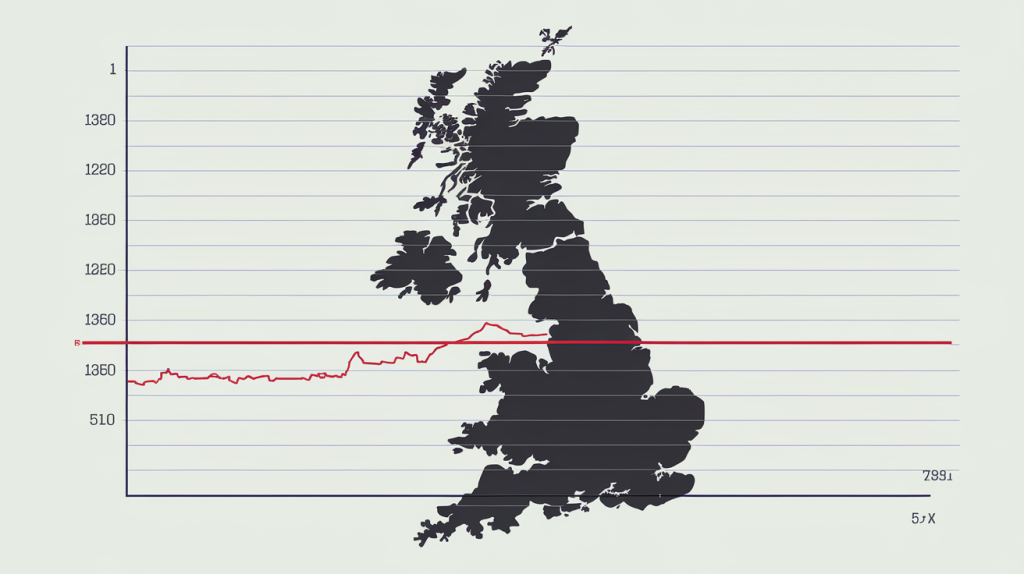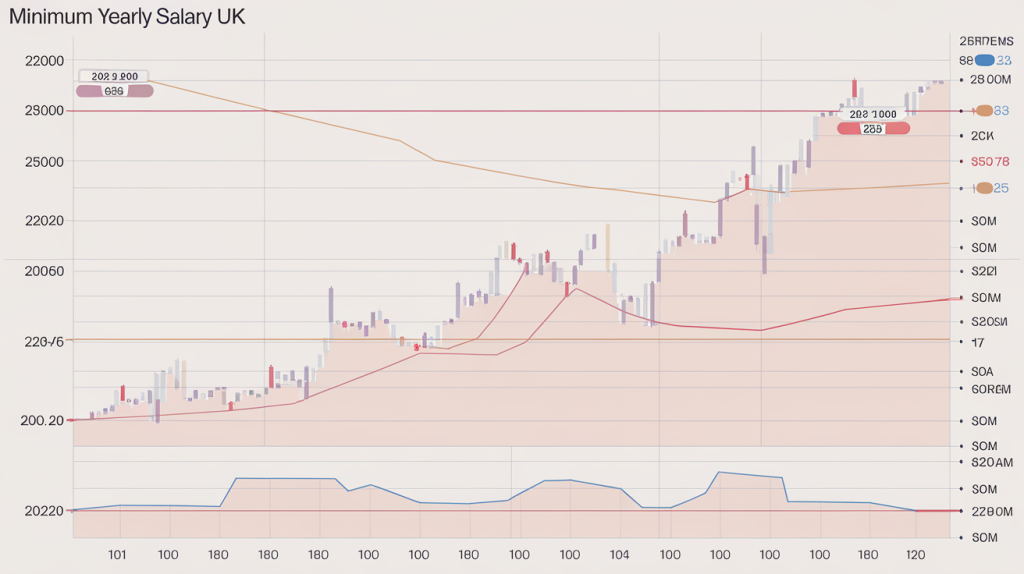The minimum yearly salary UK workers can earn is designed to make sure everyone gets paid fairly for their work. Let’s explore what this means for people working in the United Kingdom in 2025.
Table of Contents
What is the Minimum Yearly Salary in the UK?
The minimum yearly salary in the UK is based on something called the National Minimum Wage and the National Living Wage. These are the lowest amounts that employers are legally allowed to pay their workers per hour. When you add up all these hours over a year of full-time work, you get the minimum yearly salary. As of April 2025, the National Living Wage for workers aged 21 and over is £12.21 per hour. This is a nice increase from the £11.44 rate in 2024. For someone working 40 hours every week for a whole year, this works out to a minimum yearly salary of about £25,397. That’s calculated by multiplying £12.21 × 40 hours × 52 weeks.
It’s important to know that the minimum yearly salary UK regulations set depends on your age. Workers under 21 have different minimum wage rates. For 18-20 year olds, the minimum wage is £9.85 per hour in 2025, which means a full-time yearly salary of about £20,488. For 16-17 year olds, it’s £7.55 per hour, making their minimum yearly salary around £15,704 if working full-time.
History of the Minimum Yearly Salary in the UK
The UK did not always have a minimum wage. It was first introduced in 1999 when the National Minimum Wage Act came into effect. Before that, some workers were paid very low wages and there was no legal protection to ensure they received a fair amount for their work. When it was first introduced, the main minimum wage rate was just £3.60 per hour. Over the years, it has increased steadily to keep up with the cost of living. In 2016, the government introduced the National Living Wage for workers aged 25 and over, which was higher than the minimum wage. In 2021, they lowered the age for the National Living Wage to 23, and then in 2024, they lowered it again to 21.
The minimum yearly salary UK workers receive has grown faster than regular wages in recent years. This is because the government wants to reduce the number of people who work but still struggle to afford basic living costs.
How is the Minimum Yearly Salary Decided?
The minimum yearly salary UK workers get does not just increase randomly. There is a special group called the Low Pay Commission that recommends to the government how much the minimum wage rates should increase each year.
This commission looks at many different things when making their recommendation. They consider:
- How much things cost in shops (inflation)
- How well businesses are doing
- How much other workers are getting paid
- Whether increasing the minimum wage might cause people to lose their jobs
Once they’ve looked at all these factors, they tell the government what they think the new rates should be. The government usually follows their advice, but sometimes they decide to be more generous and increase the rates by more than what was recommended. The announcements about changes to the minimum wage rates usually happen in the autumn, with the new rates taking effect the following April. This gives businesses time to prepare for the changes.

Who Gets the Minimum Yearly Salary in the UK?
Not everyone in the UK earns just the minimum yearly salary. In fact, most workers earn more than this. About 7% of all workers in the UK are paid at or very close to the minimum wage rates. People who earn the minimum yearly salary often work in certain industries. These include:
- Retail shops
- Restaurants and cafes
- Hotels
- Cleaning services
- Care homes
- Hairdressers and beauty salons
- Some factory work
Workers in London and the southeast of England are less likely to be on the minimum wage because the cost of living is higher in these areas, so employers often need to pay more to attract workers.
Part-time workers are more likely than full-time workers to be paid the minimum wage. This means their yearly salary will be lower because they work fewer hours, even though their hourly rate is the same.
Is the Minimum Yearly Salary in the UK Enough to Live On?
This is a big question many people ask. For some people, especially those with families to support or those living in expensive areas, the minimum yearly salary UK law requires might not be enough to cover all their costs. That is why there is another calculation called the “Real Living Wage.” This is worked out by a charity called the Living Wage Foundation. They look at what people actually need to earn to have a decent standard of living. The Real Living Wage is voluntary – employers don’t have to pay it, but many choose to because they want to make sure their workers can afford to live comfortably.
As of November 2024, the Real Living Wage is £13.85 per hour across the UK and £15.50 in London where things cost more. This would give a full-time worker a yearly salary of about £28,808 outside London or £32,240 in London. The gap between the official minimum yearly salary UK law requires and the Real Living Wage shows that the government’s rates might not be enough for everyone to live on comfortably.
What Happens If Employers Don’t Pay the Minimum Yearly Salary?
If an employer does not pay at least the minimum wage, they are breaking the law. Workers can report their employer to HM Revenue & Customs (HMRC), who can investigate. If HMRC finds that an employer has not been paying the minimum wage, they can:

- Make the employer pay all the money they owe to their workers
- Fine the employer up to 200% of the amount they underpaid
- Name and shame the employer publicly
- In very serious cases, take the employer to court
In the 2023-2024 financial year, HMRC helped more than 155,000 workers recover over £16 million in wages they should have been paid. Some big companies have been caught not paying the minimum wage, often because of mistakes in how they calculate working time or because they make workers pay for uniforms or tools.
Conclusion
The minimum yearly salary UK law guarantees has come a long way since it was introduced in 1999. It provides an important safety net to make sure workers aren’t paid unfairly low wages. While the rates increase each year, there are still debates about whether they’re high enough for people to live on comfortably, especially in expensive areas.
If you’re a worker, it’s important to know your rights and make sure you’re being paid at least the minimum wage for your age group. If you’re an employer, you need to stay up-to-date with the changing rates and make sure you’re paying your workers correctly to avoid penalties.
As the cost of living continues to change, the minimum yearly salary in the UK will keep being adjusted to try to ensure that work pays fairly for everyone.
FAQs
Does the minimum yearly salary UK law sets include taxes?
No, the UK minimum wage figures represent gross pay before any deductions. Your actual take-home pay will be lower after income tax and National Insurance contributions are subtracted.
Are apprentices entitled to the minimum yearly salary?
Apprentices have a separate minimum wage rate (£7.09/hour in 2025). However, apprentices aged 21+ who complete their first year must receive either the National Living Wage or the appropriate National Minimum Wage for their age group.
Can employers include tips when calculating the minimum yearly salary?
No, UK law strictly prohibits employers from counting tips, gratuities or service charges toward meeting minimum wage obligations. The full minimum wage must be paid separately from any tips received.


